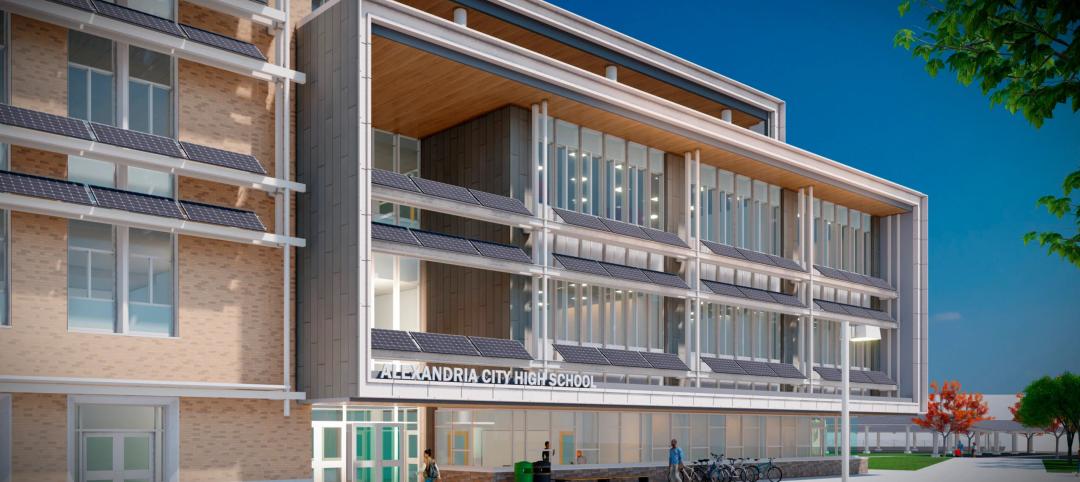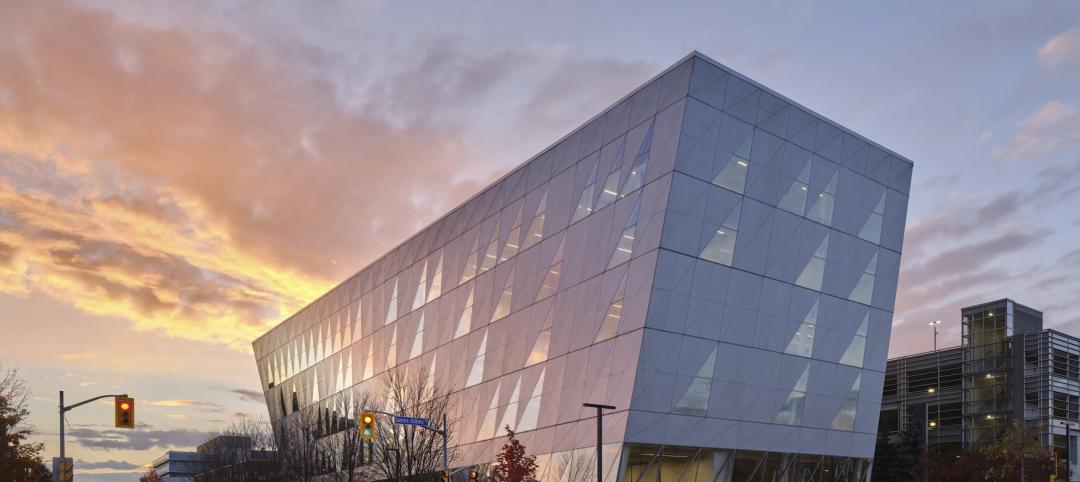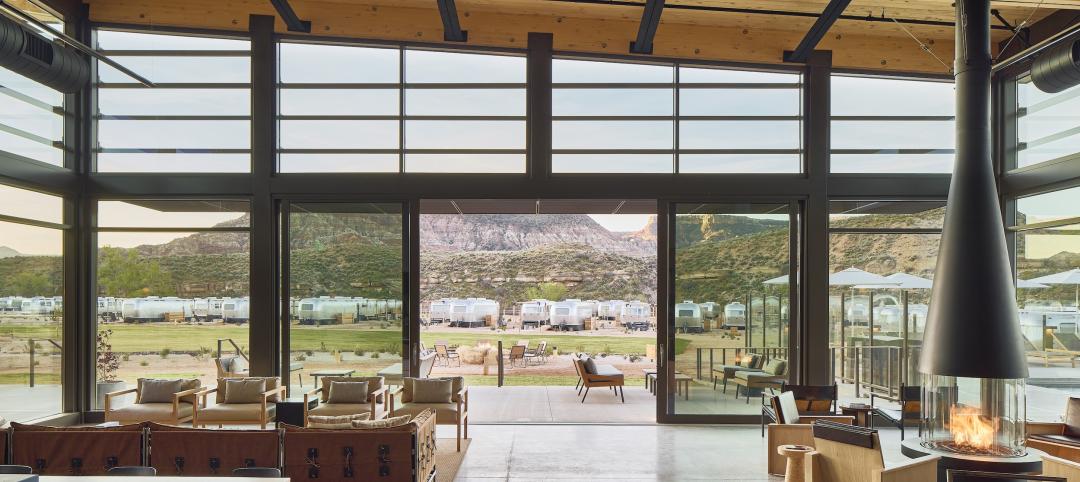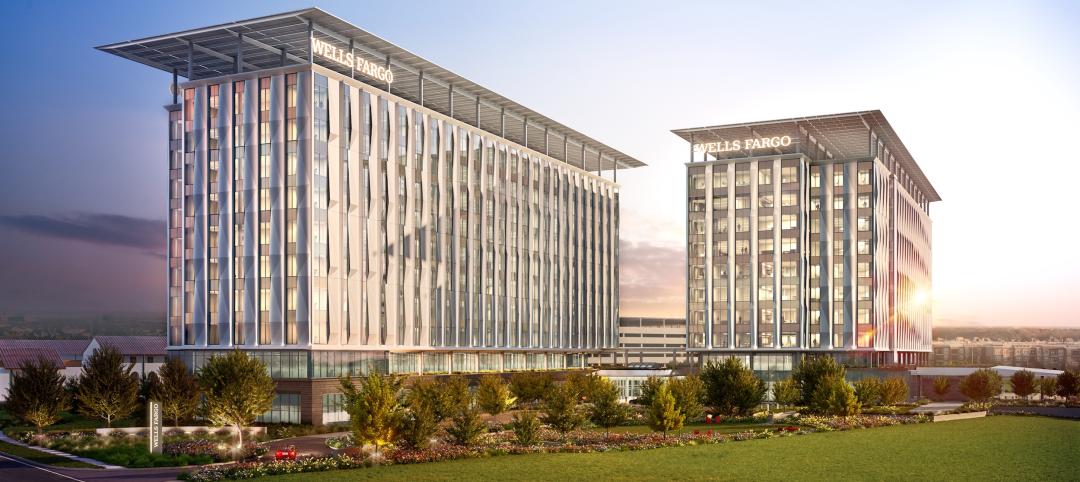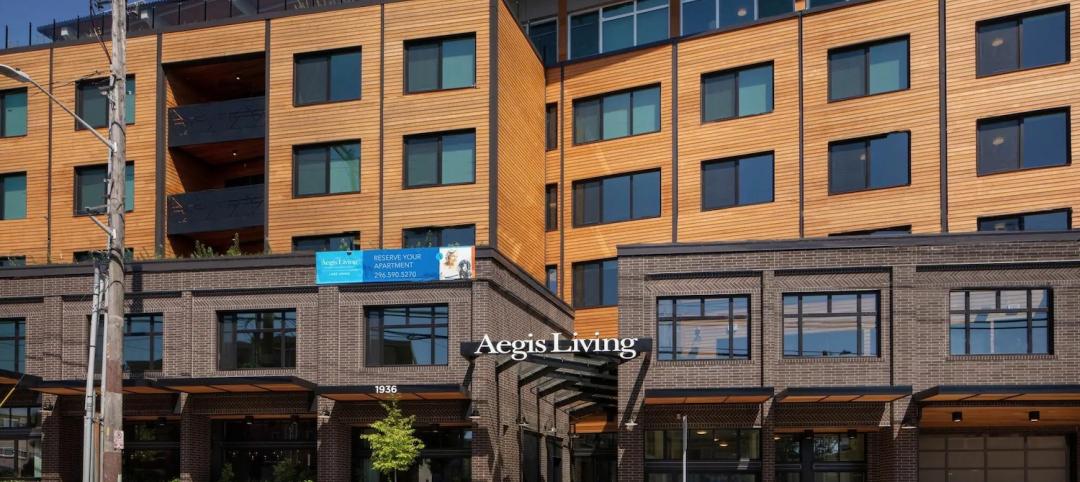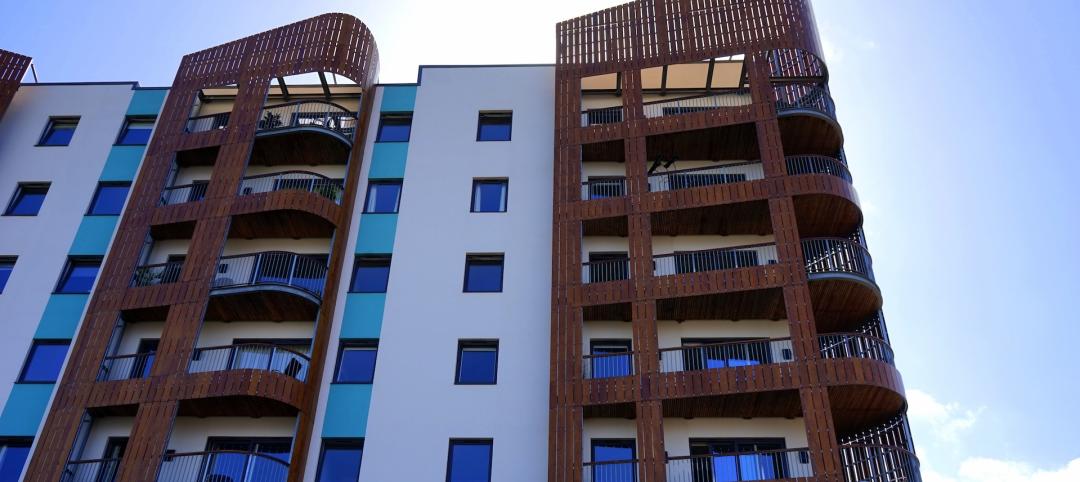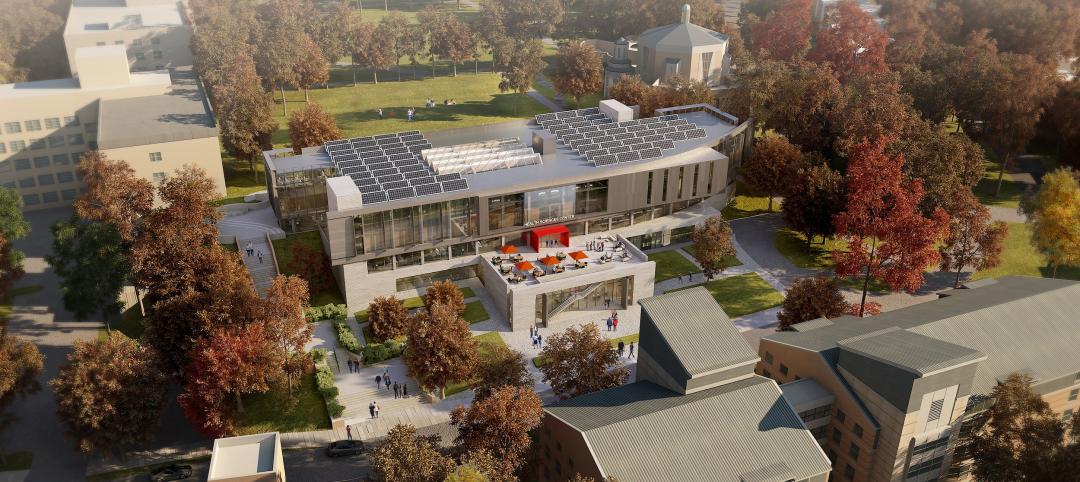HKS Architects, Inc., a national architectural firm with 28 U.S. and international offices, has formed the HKS Science & Technology practice.
Specializing in the planning and design of highly technical building types, HKS’s Science & Technology practice offers the broadest range of services available to the academic and biomedical research, biotechnology, pharmaceutical and medical device community, including laboratory programming, planning and design, strategic science planning and laboratory equipment planning.
“We know that the continuum of new science and emerging technologies is evolving with ever-increasing momentum,” said Ralph Hawkins, president and CEO of HKS, Inc. “Offering science and technology services to our clients is part of HKS’s strategy to provide the most comprehensive services to meet their constantly changing and evolving needs.”
H. Michael Smith, AIA, LEED AP, senior vice president, is HKS’s National Science & Technology Practice Leader. With more than 27 years of experience in a wide range of renovation, adaptive reuse and new construction projects, Smith has focused his entire career on the design of science and technology building types. Working for clients in the corporate, institutional, academic and government market sectors, he has directed, managed, programmed and designed many notable projects, including academic and biomedical teaching and research laboratories, biotechnology and pharmaceutical research and production facilities, cleanrooms for microelectronics and medical device manufacture, and animal research facilities, among others.
For the past decade, Smith has held principal-level, science-practice leadership positions at some of the nation’s largest architectural firms and has been responsible for the development of such notable science buildings as the Wallis Annenberg Research Center at the House Research Institute in Los Angeles, Calif.; the Arnold and Mabel Beckman Cancer Immunotherapeutics and Tumor Immunology Building at the City of Hope National Medical Center in Duarte, Calif.; the Donald P. Shiley Center for Science & Technology at the University of San Diego in San Diego, Calif.; and the Dana & David Dornsife Cognitive Neuroscience Imaging Center at the University of Southern California in Los Angeles, Calif.
Demonstrating the HKS Science & Technology practice’s commitment to achieving excellence in science and technology facilities design, the firm acquired world-renowned laboratory planning firm Earl Walls Associates, which will be rebranded as Earl Walls Consultancy, a division of HKS. With more than 2,500 laboratories to its credit, totaling over 200 million gross square feet, Earl Walls Associates grew from the 1962 collaboration among Dr. Jonas Salk, architect Louis I. Kahn and founder Earl Walls. Together they designed the Salk Institute, which established new milestones for laboratory facilities design. For the past five decades, Earl Walls Associates was integral to the development and innovation of many of the world’s modern laboratory planning concepts, including 22 awarded projects in R&D Magazine’s “Laboratory of the Year” competition.
Ken DeBoer and Ned Michalowski lead the Earl Walls Consultancy, based in San Diego, Calif. DeBoer, with 37 years of experience, is a programmer and planner with a complete understanding of the technical issues involved in highly complex laboratories and their support systems. His portfolio includes facilities for numerous government and academic institutions, ranging from sophisticated national core facilities to instructional laboratories for community colleges. More than 25 years ago, DeBoer began his laboratory planning career working with Earl Walls.
Michalowski has gained varied experience in the programming and design of laboratory facilities for the federal government, academia, private sector and institutional research. He joined Earl Walls in 1985 and has extensive experience providing strategic science planning, programming and design for numerous projects of various sizes, types and complexity. His projects have won awards including R&D Magazine's 1995 “Laboratory of the Year” for Ciba-Geigy's Life Sciences Building.
“DNA genetic coding didn’t exist 20 years ago,” said DeBoer. “Today, scientists are reinventing science as new methods and technologies become available. In turn, we must design facilities to accommodate both existing and future technologies. We speak the language of scientists, offering a distinct blend of technical knowledge and design creativity.”
Examples of innovative science and technology projects include:
- University of Texas, MD Anderson Cancer Center Clinical Research Building, Houston, Texas
- University of Arkansas for Medical Sciences, Biomedical Research Center, Little Rock, Arkansas
- University of Texas Southwestern Medical Center, Clements Advanced Medical Imaging Center, Dallas, Texas
- Brooke Army Medical Center, Institute of Surgical Research, Fort Sam Houston, Texas
- Utah State University, Widtsoe Hall Chemistry Building, Logan, Utah
- Instituto de Diagnóstico y Referencia Epidemiológicos (InDRE), Infectious Disease Laboratories, Mexico City, Mexico
- The Salk Institute for Biological Studies, La Jolla, California
- National Institutes of Health, Mark O. Hatfield Clinical Research Center, Bethesda, Maryland
- Ciba Geigy Pharmaceuticals, Life Sciences Building, Summit, New Jersey
- National Institute of Standards and Technology (NIST), Advanced Measurement Laboratory, Gaithersburg, Maryland
- Genomics Institute of the Novartis Research Foundation, La Jolla, California
- University of Alabama, Shelby Hall Interdisciplinary Science Building, Tuscaloosa, Alabama
- Pacific Northwest Laboratories, Environmental Molecular Sciences Laboratory, Richland, Washington
- University of Wisconsin, Microbial Sciences Building, Madison, Wisconsin
“Science and technology facilities should inspire creativity and innovation, foster collaboration among colleagues and peers, attract and retain the best and brightest talent, and effectively represent an institution’s desired image to the public,” said Smith. “I am passionate about our work and committed to delivering facilities for science that meet the highest expectations of our clients, while respecting their time and budget constraints.” BD+C
Related Stories
Life of an Architect Podcast | May 15, 2023
Life of an Architect Podcast Ep. 125: What Makes a Great Employee?
How do you define a great employee? The answer is most likely dependent on who is attempting to respond: the employee or the employer. Life of an Architect's Bob Borson, FAIA, and Andrew Hawkins, AIA, talk about the traits and characteristics of great employees.
K-12 Schools | May 12, 2023
In Virginia, a new high school building helps reimagine the experience for 1,600 students
In Virginia, the City of Alexandria recently celebrated the topping out of a new building for Alexandria City High School. When complete in 2025, the high-performance structure will accommodate 1,600 students.
University Buildings | May 11, 2023
New ‘bold and twisting’ building consolidates School of Continuing Studies at York University
The design of a new building that consolidates York University’s School of Continuing Studies into one location is a new architectural landmark at the Toronto school’s Keele Campus. “The design is emblematic of the school’s identity and culture, which is centered around accelerated professional growth in the face of a continuously evolving labor market,” according to a news release from Perkins&Will.
Sustainability | May 11, 2023
Let's build toward a circular economy
Eric Corey Freed, Director of Sustainability, CannonDesign, discusses the values of well-designed, regenerative buildings.
Hotel Facilities | May 9, 2023
A new camping destination near Utah’s Zion National Park offers a variety of all-season lodgings and amenities
Outdoor lodging brand AutoCamp has opened a new camping destination near Utah’s Zion National Park. A 16-acre property, AutoCamp Zion is located between the Virgin River and the desert of Southern Utah.
Headquarters | May 9, 2023
New Wells Fargo development in Texas will be bank’s first net-positive campus
A new Wells Fargo development in the Dallas metroplex will be the national bank’s first net-positive campus, expected to generate more energy than it uses. The 850,000-sf project on 22 acres will generate power from solar panels and provide electric vehicle charging stations.
Regulations | May 8, 2023
Supreme Court case likely to have huge impact on Clean Water Act
A case before the Supreme Court will likely determine how the Clean Water Act is interpreted and the ruling could open up new areas for development within or adjacent to wetlands.
Senior Living Design | May 8, 2023
Seattle senior living community aims to be world’s first to achieve Living Building Challenge designation
Aegis Living Lake Union in Seattle is the world’s first assisted living community designed to meet the rigorous Living Building Challenge certification. Completed in 2022, the Ankrom Moisan-designed, 70,000 sf-building is fully electrified. All commercial dryers, domestic hot water, and kitchen equipment are powered by electricity in lieu of gas, which reduces the facility’s carbon footprint.
Multifamily Housing | May 8, 2023
The average multifamily rent was $1,709 in April 2023, up for the second straight month
Despite economic headwinds, the multifamily housing market continues to demonstrate resilience, according to a new Yardi Matrix report.
University Buildings | May 5, 2023
New health sciences center at St. John’s University will feature geothermal heating, cooling
The recently topped off St. Vincent Health Sciences Center at St. John’s University in New York City will feature impressive green features including geothermal heating and cooling along with an array of rooftop solar panels. The geothermal field consists of 66 wells drilled 499 feet below ground which will help to heat and cool the 70,000 sf structure.




